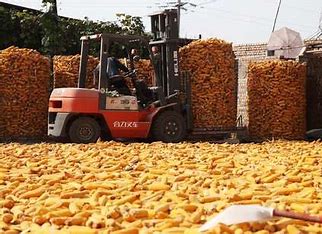Package includes auctions, renewals, and an authorization regime
12/20/2022

In the last four years, the railroad sector has seen a wave of new projects. At least R$61 billion in investments were contracted (considering the values at the time of contracting), including auctions of new stretches, early renewal of concessions, and a new private railroad.
The impact of most of these projects is still to come since they are long-term enterprises. However, specialists assess that a real change in the cargo transportation matrix in Brazil, still very concentrated on highways, is still far off. A greater transformation will depend on attracting more private investment and resuming the role of the government in the growth of the network.
In 2022, railroads should be responsible for 19% of the country’s cargo movement – without much variation concerning the level observed since 2004, according to data from consultancy Ilos. Highways will continue to represent about 63% of the transportation matrix.
“We have made progress, but only in specific points. It will take time for us to put a change into practice because at the same time that investments are made, the country continues to increase its production, its harvest. The new projects are extremely necessary, but, in the short term, there will be no change in the participation of the modals,” says Maria Fernanda Hijjar, executive partner at Ilos.
“The truth is that we have had no evolution [in recent years]. On the contrary, we are losing rails, because of the existing 30,000 km, only 12,000 km are operational. We have 18,000 km of abandoned or underused railroads and many of them are even being returned to the federal government,” says Marcus Quintella, head of FGV Transportes, the Fundação Getulio Vargas’ Center for Transport Studies.
He also points out that the contracted investments will bring some progress. “The early renewals will guarantee, at least, the improvements in the railroad network that is already in operation. In addition, the inclusion of cross-subsidies, with the allocation of part of the investments to new railroads, will have a positive effect,” he says.
In recent years, the federal government finally managed to get the plan to renew major railroad concessions off the drawing board, as a way to bring forward new investments – a plan started in 2015, but which was stuck for years due to resistance from the public spending watchdog TCU.
The pioneer was Rumo’s Malha Paulista, in May 2020, which included works estimated at the time at R$6.1 billion. Since then, Vale has also managed to renew the concessions of two railroads, in exchange for some R$24.7 billion in investments. Part of the funds has been allocated to other projects: the construction of the Ferrovia de Integração Centro Oeste (Fico), currently being built by Vale, and the purchase of equipment for the Ferrovia de Integração Oeste Leste (Fiol).
MRS also had approval for its addendum, with a commitment of about R$9.7 billion in new work in the system.
In addition, two auctions of new concessions were held. In the first of them, in 2019, Rumo won the central stretch of the Norte-Sul highway, which began operating in March 2021.
The second auction, of Fiol’s initial stretch, was won by Bamin (Bahia Mineração) in April 2021. The company expects to start work in the first quarter of 2023 to complete the railroad (whose construction was started by the government). Until now, the group has been evaluating the projects and carrying out due diligence on the site, as well as starting services for the remediation of environmental liabilities.
This newly contracted investment wave, however, is already encountering problems. The operators are asking the federal government to acknowledge the need for an economic and financial rebalancing of the contracts, due to the strong inflation of inputs observed as of the second half of 2021 – when a good part of the agreements was already signed.
“The increase in inputs is an effective problem, which has generated liabilities that have not been resolved. The prices have not yet been readjusted. The construction work is going to happen, but the government needs to signal that this abyss is going to be solved,” says Fernando Paes, head of ANTF (National Association of Railway Carriers).
Besides the auctions and renewals, another advance in the sector was the approval of the authorization regime, which brought the possibility of private companies building railways on their own, without participation or sharing of risks with the government.
In the market, the expectation for authorizations is positive, but much more modest than the exorbitant projections released by the federal government – in total, the requests filed could add up to R$258 billion, according to the Ministry of Infrastructure. The expectation is that, in practice, a small portion of those applications will get off the ground. Still, the model is seen as an important step.
“It is very difficult to predict which and how many projects will come to fruition. When we look at the experience of private port terminals, the rate of projects not coming to fruition is quite high, so it is something natural,” says Mr. Paes.
For him, the most viable projects will be the smaller ones, with easier and less costly implementation, and for which there is already a forecasted load. “It can also be a good way to solve stretches of existing railways that are unused or have low utilization,” he says.
Besides private investments, a general perception in the sector is that, in order to build new large railroads and generate development in regions of the country where demand is not yet given, the actions of the federal government will be indispensable.
“The private company is not going to build a groundbreaking railroad, that is the role of the government,” says Mr. Quintella, with FGV Transportes.
For him, there is no short-term perspective of the country returning to large public works, due to the fiscal crisis. However, he ponders that it is already possible – and necessary – to invest again in the elaboration of good projects and in planning for the country’s logistics, including beyond railroads. “It is important to think about intermodality. It is wrong to think of investing only in railroads,” he says.
Mr. Paes, with ANTF, also sees the need for the government to participate more actively. “Only authorizations or only cross-subsidies are not going to be enough. The federal government needs to assume a role as a protagonist of the railway network, whether in construction, financing, or via public-private partnerships (PPPs). We need to take that leap.”
Despite the challenges and costs, experts point to major benefits in promoting a better balance of the transportation system in Brazil. For logistics, this change would represent a multi-billion cost reduction, according to Ms. Hijjar, with Ilos.
A projection by the consultancy indicates that if the Brazilian matrix was similar to that of the U.S. – in which the railway modal represents 33% of the total; the pipeline, 19%; and waterways, 9% – the transportation costs, in 2021, would have been R$208.42 billion less. “Of course, it is only a theoretical exercise, but it already gives the dimension of the impact,” she says.
*By Taís Hirata — São Paulo
Source: Valor International

/i.s3.glbimg.com/v1/AUTH_37554604729d4b2f9f3eb9ad8a691345/internal_photos/bs/2022/I/U/ZxQfpsSJGtdWiWBFcsSg/110416fitch028.jpg)

/i.s3.glbimg.com/v1/AUTH_37554604729d4b2f9f3eb9ad8a691345/internal_photos/bs/2022/6/C/m91CXkQ56w5t1BXVXyQQ/19agr-100-borracha-b10-img01.jpg)

/i.s3.glbimg.com/v1/AUTH_37554604729d4b2f9f3eb9ad8a691345/internal_photos/bs/2022/V/K/GQrSpjSqWZTILaZrSHHg/100-fusao-b1-img02.jpg)


/i.s3.glbimg.com/v1/AUTH_37554604729d4b2f9f3eb9ad8a691345/internal_photos/bs/2022/B/k/FeRLrlRXCF1BJuD5UAug/151222infoprice01.jpg)
